Tank farms are key elements in crude storage—their life time utilization, maintenance practices and operating patterns determinethe profitability of a refinery or an Oil & Gas company or a tank terminal operator.
Maximizing Tank Utilization
Considering the volatile nature of oil prices and the geopolitical situation across the globe, it is important to optimize oil tank storage capacities to ensure businesses do not have supply disruptions, have minimum opportunity loss and maintain lean inventory. It becomes imperative for tank farm owners to have agile operations that enable them to pull out tanks for maintenance and inspection and bring them back into operations, as and when situations demand.
To maximize asset utilization of tanks, it becomes crucial for refineries, tank terminals and Oil & Gas companies to determine accurately tank health based on relevant standards despite unavailability of key resources for assessment and take business decisions at the right time. Any disruption due to unplanned / emergency maintenance could impact the business heavily.
In the current practice, crude tanks are recommended for maintenance and inspection (M&I) every 10-15 years. At any given time, all the tanks commissioned together can be due for cleaning and detailed inspection. Having number of tanks due for maintenance, M&I for all these tanks cannotbe cannot be carried out due to disruption of supply/delivery at the tank farms and this warranties the necessity of prioritization in planning these critical activities.
The key question with any decision- maker is—is it possible to have a data-based approach to prioritize the maintenance of tanks?
The cost of emptying a tank to identify corrosion is high and any wrong prioritization might result in in-service failure resulting in a financial hiccup. With the rising scarcity in storage space, maintenance is of utmost interest to tank terminal and Oil & Gas companies. It is predicted that the supply market will test its storage limits in the near future as there is more supply than demand.
Tank Farm Analytics - Optimizing Tank Farm Operation and Maintenance for Safety and Profitability
The Tank Farm Analytics (TFA) is built on RETINA360 AI/ML software platform that helps to intelligently prioritize tank maintenance based onthe health score of the tanks.
An AI/ML-Based Decision Support System for Tank Farm Operations
RETINA360's Tank Farm Analytics helps steer clear of the cost, priority and storage concerns. Its AI/ML-based decision support system computes and estimates the level of corrosion and quantifies the sludge on an ongoing basis without the need to empty a tank. TFA's advanced predictive analytics computing engine assesses tank farms based on various parameters before arriving at a health score that would enable companies to make data-backed decisions.
Real-Time Health-Check for Tank Maintenance Prioritization
Built on RETINA360's AI/ML software platform, can intelligently prioritize tank maintenance based on the health score of the tanks. A health score, computed through algorithms derived from historization of data, allows tank terminal companies and Oil & Gas companies to plan their storage/supply based on data. A data-driven decision is success-driven and doesn't risk compliance or safety.
Predictive Analytics Platform for Visual Intelligence and Analysis
RETINA360 is an astute AI/ML predictive analytics platform with multiple capabilities like dashboarding, historization of data, alerting on anomalies, performance lapses, utilization life and ability to direct on predictive maintenance using AI/ML-led analytics for the energy and utilities industry.
Composite Health Score
Tank Farm Analytics computes these health scores based on Estimated Tank Bottom Plate Corrosion, External Condition of a Tank and Estimated Sludge Quantity.
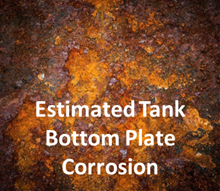
Estimated Tank Bottom Plate Corrosion
The remaining useful life of tanks in years is estimated based on various conditions such as age of the tank, properties of the crude, number of operations/week,tank bottom water sample analysis etc.

External Condition of a Tank
A score on the external condition is based on inputs from physical inspection of a tank as per routine inspection as recommended and carried out. This depends on corrosion of the roof and staircase and corrosion of the fire-fighting system, product draw off valves, wind girder, CP system, etcy.
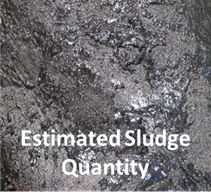
Estimated Sludge Quantity
The quantity of sludge in tanks is estimated based on historical operating conditions such as the number of years from previous M&I/commissioning, tank utilization factor, stirrer running hours, their type, location as well as number of stirrers, service of the tanks and so on. TFA follows a data-based approach to estimate sludge quantity.
Based on the inputs as relevant to the above components, further composite score (healthscore) is computed on the scale of 100.The tanks with lowest scores will be recommended for prioritization of maintenance.
Historization of Data
TFA allows companies to create their own data pool on tank farms. The system has the capability to store the historical score as well as the underlying operational and maintenance data for ready reference and analysis and also simulate with values when decisions are required for any service change. These historical scores are also used to tweak the underlying algorithms for an increased accuracy. The feature also helps in the operational aspects of a tank farm.
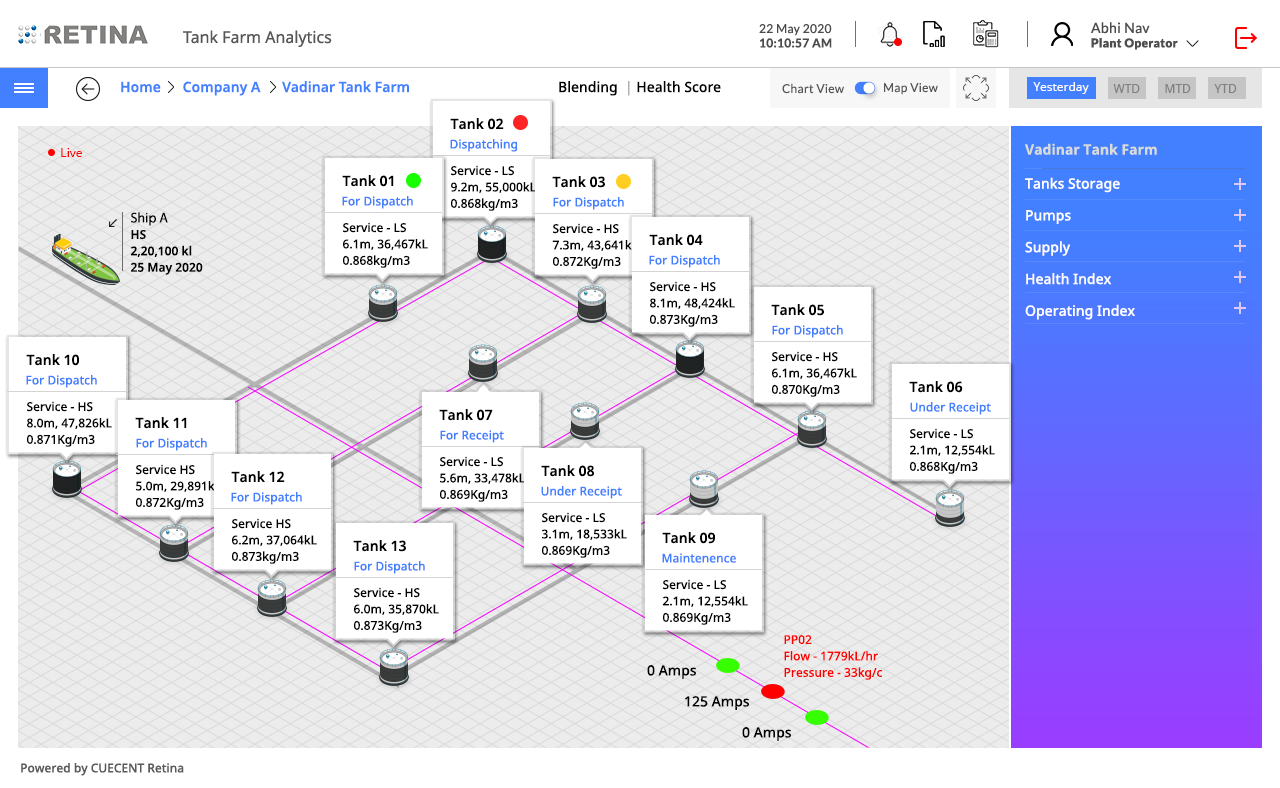
Tank Farm Analytics
- Provides an exclusive dashboard of tank farm data analytics using AI/ML- powered data visualization capabilities to accommodate operational changes
- Displays the live status of tank filling and withdrawing
- Provides analytics on the number of tanks in HS/LS, with assessment of health score and suggested service changes
- Provides alerts based on tank filling priority; critical time for the tank to be filled or emptied; and deterioration of estimated health score
- Tracks status of receipts from the ports and keeps track of the operations of the tank farm and assists in executing the tasks easily by providing various operational alerts as required
- Display the multiple tank farm information in a single dashboard and helps the user to deep dive into a specific tank by location or tank farm to visualize the vital parameters and status of the working equipment, including pumps, filters along with tanks.
- Monitoring of controlled blending operations and raising alerts in case of large variations
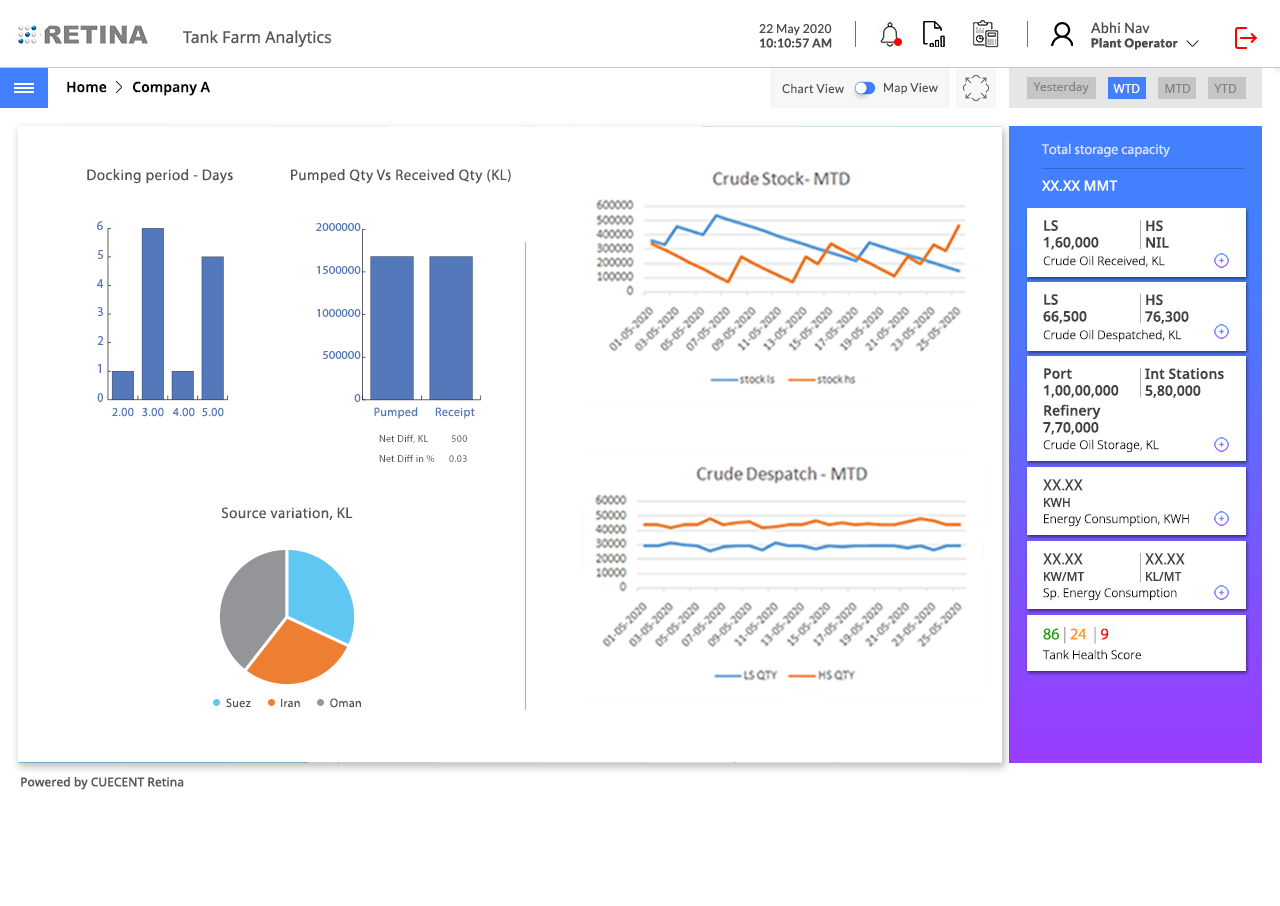
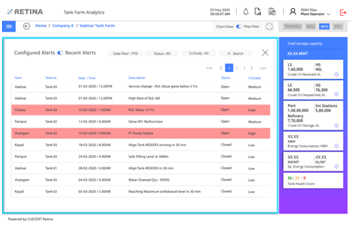
Benefits of Tank Farm Analytics
Transition from a time-based M&I to data-based M&I
Prioritization of tank maintenance based on historical operational patterns helps in cost optimization (including tendering costs) and resource optimization
Phased pull out of assets for maintenance, which helps in increasing operational efficiency without compromising on safety
Alerts to operators for ease of operation
Alerts on critical time and change overs
One-stop integrated information available in real-time for management decisions

RETINA360, a product of dt360 Inc. (part of the Bahwan CyberTek (BCT) Group), a global provider of digital transformation solutions in the areas of AI-powered Predictive Analytics, Digital Experience and Digital Supply Chain Management.